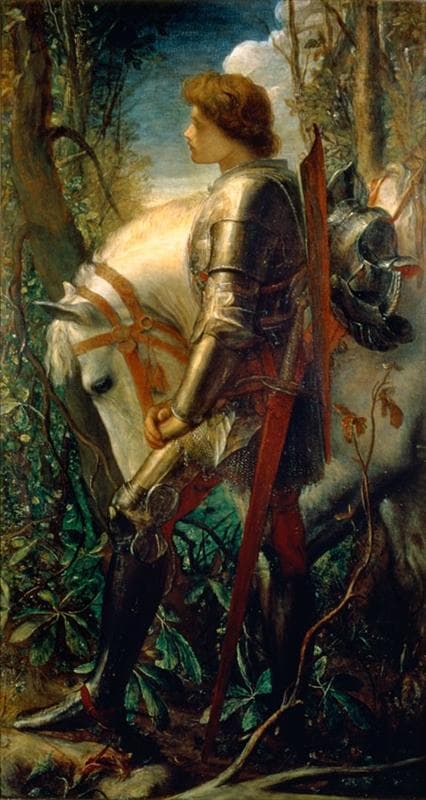Questing
Everyone is searching for something. Whether we know it or not or like it or not, our lives are all about seeking - even if it is only the next meal! It is reflected in our love of motion and travel, always going somewhere, never at rest. More properly, perhaps, it is reflected in our eternal quest for love in all its forms, from the most physical to the most spiritual.
Both these paintings show someone on a quest. The monk on the seashore is seeking his spiritual experience in isolation, in self-denial, taking himself off from all the minutia of civilisation and reuniting with the vastness of nature. A chance to think! Sir Galahad, meanwhile, is off on his quest to seek the Holy Grail, his search for spiritual union with God and which leads him through a vivid landscape of austerity and hardship, too.
I love these paintings. I love the Friedrich because of the vastness of the sky and ocean, and the humble figure amidst it all. It is very redolent of Chinese painting, in which the landscapes are often put into context by including a tiny human figure - say, at the foot of a mountain.
I love the G.F.Watts because of the curvaceous forms within. Look at the way the horse's neck is echoed in the curve of the tree-trunk above him, or in the gentle curve of the shield on the knight's back! Sir Galahad, too, is deep in thought and contemplation. Perhaps he is thinking, 'there are no straight lines or straight answers to this searching lark! The path is all wonderfully curvaceous and winding, like mother nature herself.'

